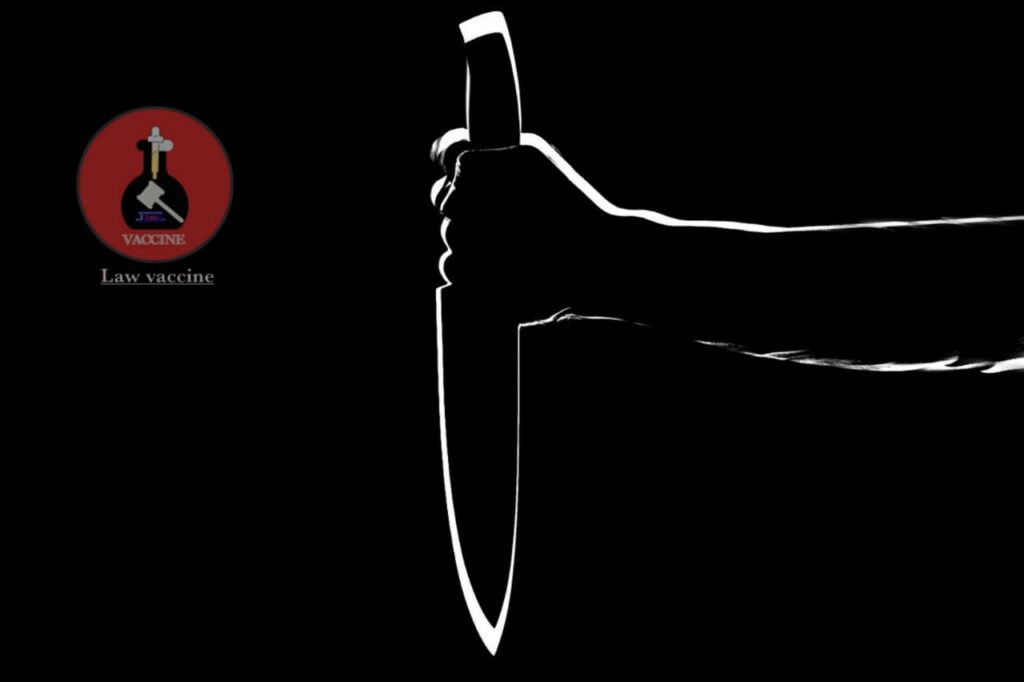Attempt to Murder
Section 307 of the Indian Penal Code deals with an attempt to murder, and it places a lot of emphasis on the accused’s purpose, experience, and planning prior to committing the offence. What factors go into determining this intention? Is there a set of rules that the courts should use to determine the intent? Is the extent of the injuries relevant in convicting anyone under this section?
An attempt to murder under Section 307 of IPC is an important section since it has some connections with Section 324 IPC, which deals with voluntarily causing physical injury with lethal weapons. It is also difficult to distinguish between cases under section 307 and cases under sections 324,325,326 since both of these offences have certain similar characteristics. The crime of attempting to murder is very serious and it is almost identical to the crime of murder. The only exception between the two offences is that section 307 does not require the perpetrator’s murder.
1. Main Ingredients under Section 307(attempt to murder) of the Indian Penal Code (IPC) are:
– The attempted crime should be of such a kind that if it is not prevented or apprehended, the victim will die.
– The prosecution may use situations such as an assault by deadly arms on sensitive areas of the body to prove the intention to kill, but the intention to kill cannot be gauged only by the intensity of the damage suffered.
– The only factor that must be shown for prosecution under Section 307 is the motive and understanding of the outcome of the act.
– In this section’s convictions, mens rea, or intent, has been lent more weight than actus reus, or the real act itself. The effort must be motivated by a real desire to murder the victim. “The type of the weapon used, how it is used, the motivation for the crime, the seriousness of the blow, and the area of the body where the damage is sustained are all taken into account to assess the reason.”

2. Case Law’s related to attempt to murder
– The landmark case of Kaluram vs. the State of Assam, in which it was determined that the attacker had a deadly weapon but only inflicted minor injuries on the victim, obviously demonstrating that he had no motive to strike, and hence he was not punished under Section 307 IPC. In cases like Kiran Kumar vs. the State of Gujarat, where the perpetrator used a large knife blade to slash the victim’s stomach near the naval area, the court correctly rules that it is a case of attempted murder rather than grievous hurt.
However, the extent of the injuries is not necessarily used to determine the motive, i.e., a very bad injury does not need to be committed to prove attempted murder; even a minor injury performed with the intent would be enough to prosecute the individual under section 307(attempt to murder).
The most contentious point is that even though an accident may have caused death in the ordinary course, but was not performed with the intent to murder, the accused would not be found guilty under section 307(attempt to murder). The sentence imposed by this clause is substantially different from that imposed by section 324, and any wrongful conviction would be very damaging to the ideals of equity and justice.
– In the case of Jai Narain vs. the State of Bihar, the court determined that the fact that four or five people assaulted a person with deadly weapons demonstrated their intent to kill that person, and therefore they would be held responsible under 307.
One of the key considerations used to determine guilt under section 307(attempt to murder) is the motive and experience of the crime being committed, although it is not the only factor. When a sentence is issued under this clause, the situations in which the crime was committed are still taken into account. The terms “under the circumstances” have nothing to do with whether the accused’s conduct was sufficient to cause the victim’s death or not; rather, they refer to the extent of the crime that the accused would have committed if his act had resulted in the victim’s death.
“Before the crime committed by the accused would be held to be an attempt to murder or an attempt to commit culpable homicide, the act must be committed with such malice or understanding in such conditions that if it had induced death, it would have amounted to murder in one case and culpable homicide not amounting to murder in the other.”
– The court ruled in Jodha vs State of Rajasthan that just because a person was stabbed in the thigh and not a central body part does not mean the matter does not come within the scope of section 307(attempt to murder).
Since proving the accused’s motive is so important in the law, several measures to evaluate the accused’s murderous purpose have been created. The test was established in the case of “Pran Dutt vs UP,” in which the court stated that the extent of the damage, the preparation is taken, and the weapon used should be examined to ascertain the accused’s motive. The doctor’s testimony is also taken into consideration.
3. Conclusion and Remedies
– Since reviewing the decisions in different cases, I believe that section 307(attempt to murder) IPC is very unclear in terms of the grounds for an accused’s prosecution. There is a general ingredient that must be present in order to be convicted under this clause, and that ingredient is motive, as well as information and the implication of the act committed. The fact that the plan to commit murder and the planning for the crime must be present is agreed upon by all courts.
– The issue of proving the motive, on the other hand, is an area where the courts disagree. The distinction is that courts say that the extent of the accident, the nature of the weapon used, and the planning taken are taken into consideration when proving the accused’s motive, but interestingly, the courts reach different conclusions on these evidence.
That means, in some cases, courts have ruled that even though the firearm used was lethal but only suffered a minor wound, the accused cannot be charged under section 307, and in others, courts have ruled that even though no injury is sustained, the accused will be convicted of intent to kill is proven.
– This is inherently contradictory. The court has decided in one instance that forced hunger can be prosecuted under section 307. The query of this section’s constitutional legitimacy was a genuine one, and the Andhra Pradesh High Court answered it with a conclusive response. The major point I concluded is that there is no strict and quick rule on the methodology of proving the accused’s motive; it varies from case to case, and it is the judge’s duty to consider the evidence before him and settle on the accused’s intention, which is the most important factor of conviction.
– The extent of the injury and the weapons used are just a few hints that the judiciary uses to come to a conclusion about the accused’s motive. As a result, even though no harm is sustained, a person may be found guilty under this clause. In terms of procedural value, this clause does not contradict Articles 14 or 21 of the constitution, and hence it is entirely legitimate.
Reference – https://indiankanoon.org/doc/455468/
Article by – Sahil Madan Mate

